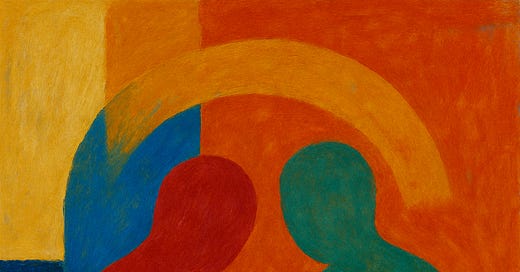Wir sind alle müde von den Nachrichten. Was sollen wir tun?
Sigal Samuel schreibt bei Vox.com:
Truly paying attention is incredibly hard, Weil says, because it requires you to see a suffering person not just as “a specimen from the social category labeled ‘unfortunate,’ but as a man, exactly like us, who was one day stamped with a special mark by affliction.” In other words, you don’t get “the pleasure of feeling the distance between him and oneself” — you have to recognize that you’re a vulnerable creature, too, and tragedy could befall you just as easily as it’s befallen the suffering person in front of you.
So, when you “pay attention,” you really are paying something. You pay with your own sense of invulnerability. Engaging this way costs you dearly — that’s why it’s the “purest form of generosity.”
So, more information isn’t always better. Instead of trying to take in as much info as possible, we should try to take in info in a way that serves the real goal: enhancing, or at least preserving, our capacity for moral attention.
That’s why some thinkers nowadays talk about the importance of reclaiming “attentional sovereignty.” You need to be able to direct your attentional resources deliberately. If you strategically withdraw from an overwhelming information environment, that’s not necessarily a failure of civic duty. It can be an exercise of your agency that ultimately helps you engage with the news more meaningfully.
Wir sollten Mitgefühl haben, nicht Mitleid:
Compassion and empathy are not the same thing, even though we often conflate the concepts. Empathy is when you share the feelings of other people. If other people are feeling pain, you feel pain, too — literally.
Not so with compassion, which is more about feeling warmth toward a suffering person and being motivated to help them.
In fact, one fMRI study showed that in very experienced practitioners — think Tibetan yogis — compassion meditation that involves wishing for people to be free from suffering actually triggers activity in the brain’s motor centers, preparing the practitioners’ bodies to physically move in order to help whoever is suffering, even as they’re still lying in the brain scanner.
Ein Lösungsvorschlag: Eine kurze Meditation nach einem schweren Artikel.
A simple Tibetan Buddhist technique called Tonglen meditation trains you to be present with suffering instead of turning away from it. It’s a multistep process when done as a formal sitting meditation, but if you’re doing it after reading a news story, you can take just a few seconds to do the core practice.
First, you let yourself come into contact with the pain of someone you see in the news. As you breathe in, imagine that you’re breathing in their pain. And as you breathe out, imagine that you’re sending them relief, warmth, compassion.
That’s it. It doesn’t sound like much — and, on its own, it won’t help the suffering people you read about. But it’s a dress rehearsal for the mind. By doing this mental exercise, we’re training ourselves to stay present with someone’s suffering instead of resorting to “the pleasure of feeling the distance between him and oneself,” as Weil put it. And we’re training our capacity for moral attention, so that we can then help others in real life.
Ich werde die Meditationsübung probieren.
Was mir hilft:
Kaum Nachrichten online lesen. Weder auf Social Media, noch auf den Nachrichtenseiten von Online-Medien. Kaum etwas davon ist so wichtig, dass ich es nicht ein paar Tage später in einem Magazin lesen könnte.
Ich lese den Falter, den Economist und den Wochenend-Standard. Dazu jede Menge Newsletter und längere Texte, die ich in Pocket gespeichert habe.
Ich widme meine Zeit hauptsächlich Büchern, Studien, YouTube-Videos und langen Podcast-Interviews. Dort beschäftige ich mich großen Trends, die langfristig für mich viel relevanter sind als die heiße Nachricht des Tages.
Zum Thema kommen in Erklär mir die Welt bald Gespräche mit Jagoda Marinić und Bernhard Pörksen. Beide haben mich sehr beeindruckt zurückgelassen.




